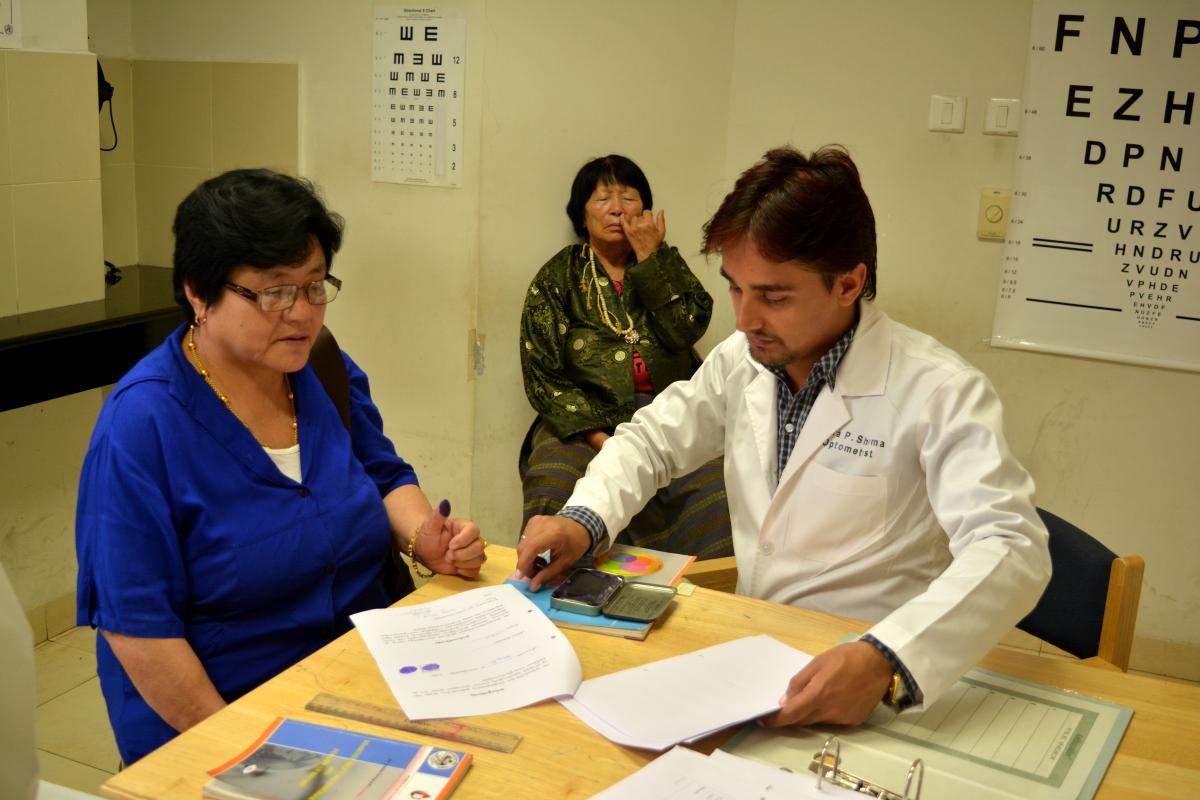Join a powerful, unprecedented alliance for better eye health for all.
Join IAPB-
Choose an alternate language here

“Depression: let’s talk” is the theme of this year’s World Health Day. This is a timely call, as mental health is generally still under-recognised. This might be even more true when associated with chronic diseases, such as diabetes. While focusing on the management of diabetes and its complications (such as diabetic retinopathy), the psychosocial wellbeing of patients is frequently left behind.
The risk of depression is significantly higher in people with diabetes. Studies suggest that the prevalence of depression among them is about 30%, and that depression affects people with diabetes up to two times more than their non-diabetic peers. There are several factors to explain this interrelation. Broadly, it can be observed that both depression leads to an increased risk of diabetes, as well as diabetes to an increased risk of depression. Diabetic complications – including diabetic retinopathy – are found to be greater among people with depression.[i] Recent studies suggest that diabetic retinopathy and moderate to severe vision loss were associated with greater symptoms of depression.[ii]
Having diabetes and depression together can have severe effects as the two conditions reciprocally reinforce each other. Being depressed makes it very difficult to effectively manage the “diabetes life” day by day and engage in good self-care. Being overwhelmed and unmotivated, people with diabetes and depression may stop (regularly) checking blood glucose levels, be careless about insulin provision, not follow the medical checks sequence (e.g. to ensure early detection of complications), and adopt unhealthy life-style behaviours; all of this contributes in return to an increase in the severity. Furthermore, persons in such a situation frequently avoid bringing up their psychosocial challenges (if they are aware) and their non-compliance with their physician. As a result, a high percentage of depression among people with diabetes remains undiagnosed and untreated.
Health professionals involved in the management of diabetic retinopathy have a role to play in addressing depression among the patients they see:
1. They need to be aware that the people with diabetes seen by them “for the eyes” are living with a chronic disease which affects their life day by day – and may they may have an undiagnosed depression as a result. Even though clients may have had appointments with other health professionals already, it is not at all granted that they have got (adequate) knowledge about diabetes and its implications and can manage or prevent complications.
2. Any interaction with a person with diabetes in eye health is not just about a clinical examination of the eye, but about an interaction with the whole person, including their psychosocial wellbeing. There are easy-to-apply WHO tools available to check wellbeing, which can be introduced as a standard procedure. Equally, intervention protocols for depression are very well developed.
3. It’s important they consider themselves being part of a team across different professionals, departments and intervention levels in the health and social sector; a team that serves the needs of the person within a people-centered care system. Managing those system links and respective relations well will benefit the patient and decrease the risk for a person to be “lost in a system”.
4. It is very important that clients are actively referred to patient associations and initiatives, and/or to strengthen the client’s motivation to engage in those. Evidence shows that patient associations and initiatives play a pivotal role for providing support for people with diabetes facing difficulties, in a safe environment. These associations can and should also play an important role in improving the policy framework to address the needs of persons with diabetes – and those with depression – effectively. Joining them as professionals to address the political sector to create people-centered diabetic management systems is another important role to take up.
When health professionals interact with persons having diabetic retinopathy, they should see the whole person and be alert to indications of depression. Psychosocial support for people with depression and those at risk is not a field for medical specialists only, but a responsibility for all. Breaking the vicious cycle of diabetes with its complications and depression is possible.
[i] de Groot M, Anderson R, Freedland KE, Clouse RE, Lustman PJ. Association of depression and diabetes complications: A meta-analysis. Psychosom Med. 2001;63:619–30. [PubMed]
[ii] Gwyneth Rees PhD, Jing Xie PhD, Eva K. Fenwick PhD, Bonnie A. Sturrock DPsych, Robert Finger PhD, Sophie L. Rogers MEpi, Lyndell Lim MBBS, Ecosse L. Lamoureux PhD. Association Between Diabetes-Related Eye Complications and Symptoms of Anxiety and Depression [JAMA Network]